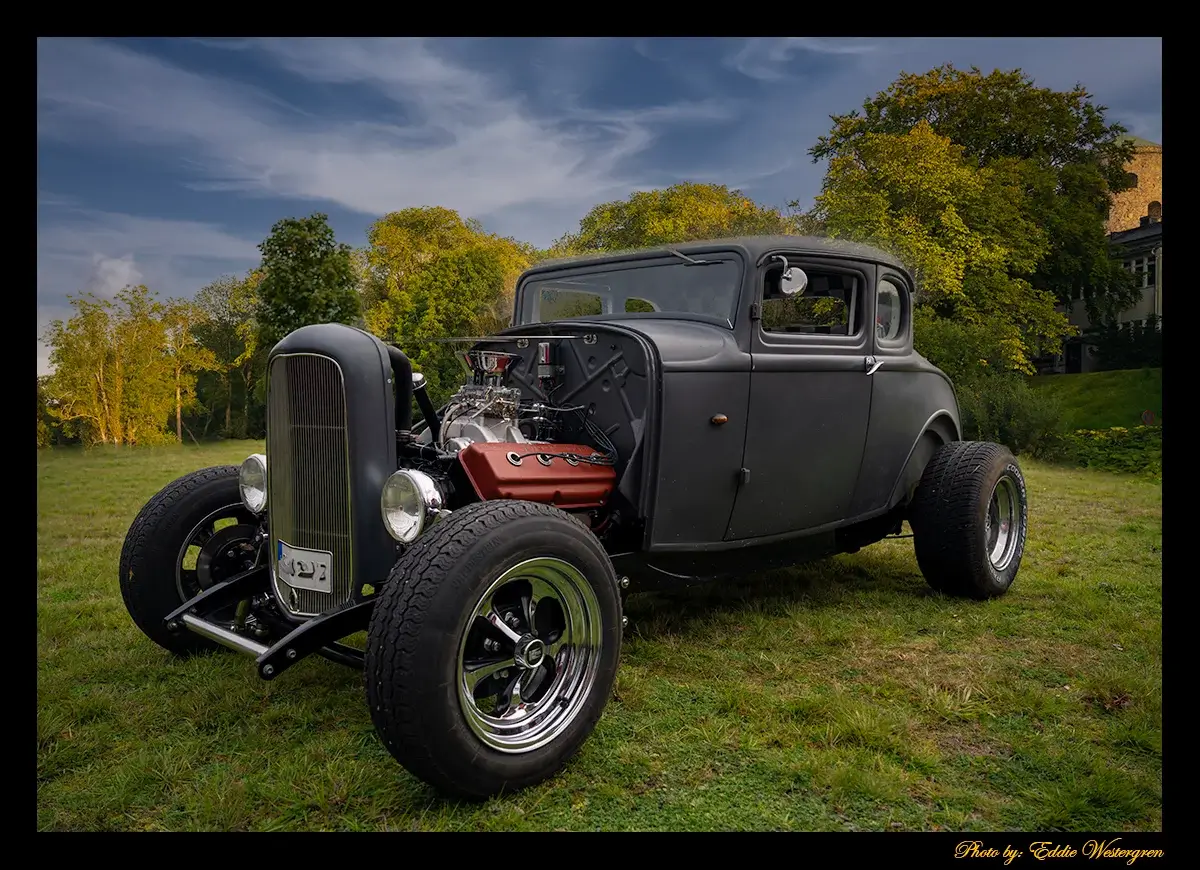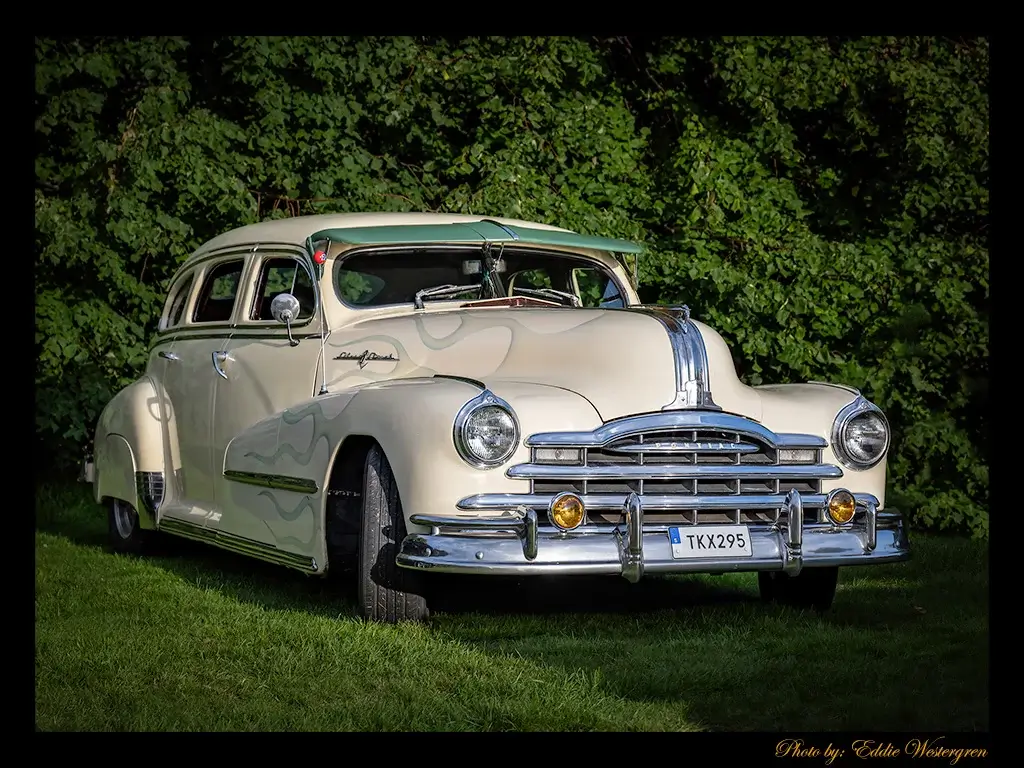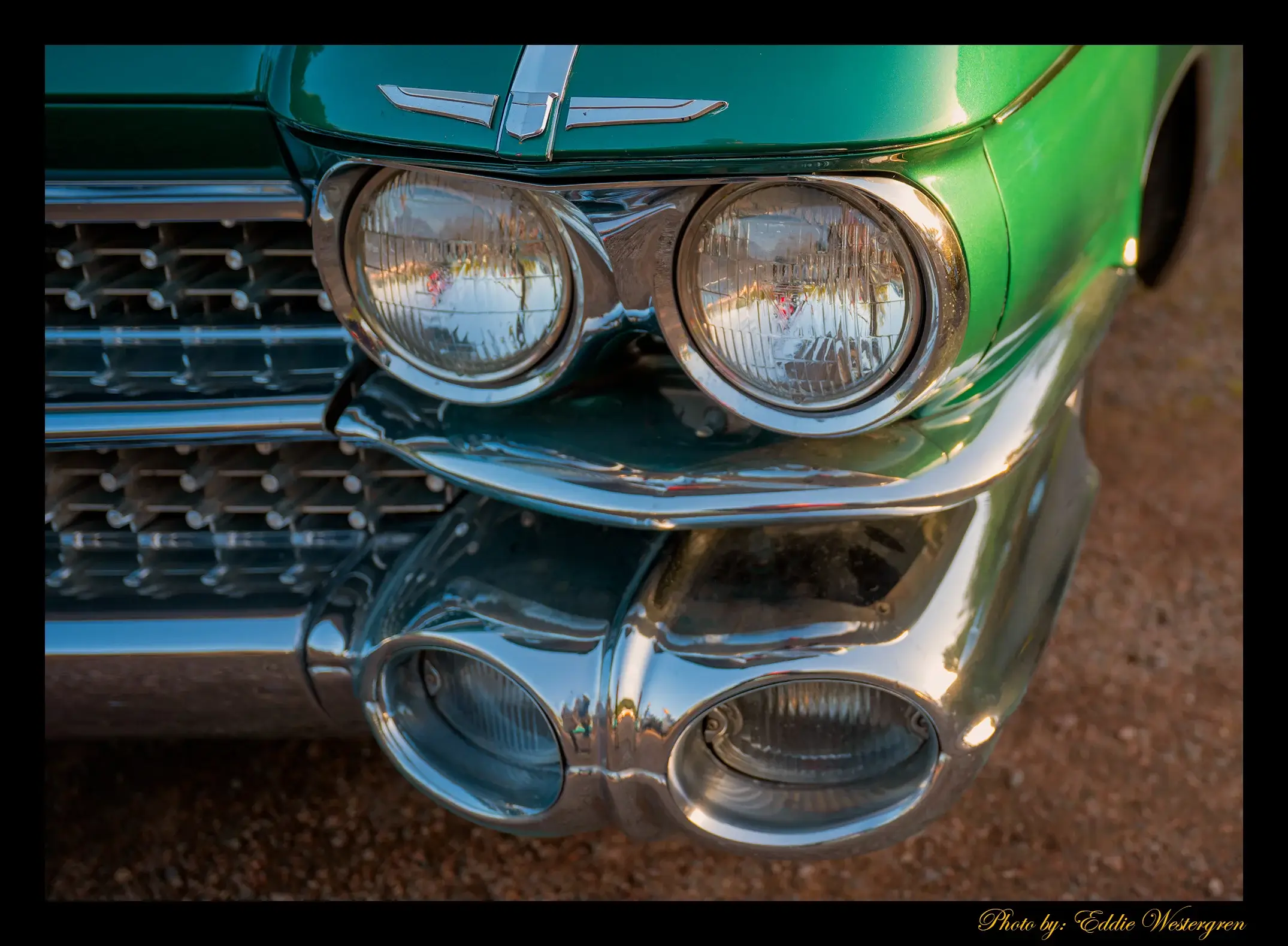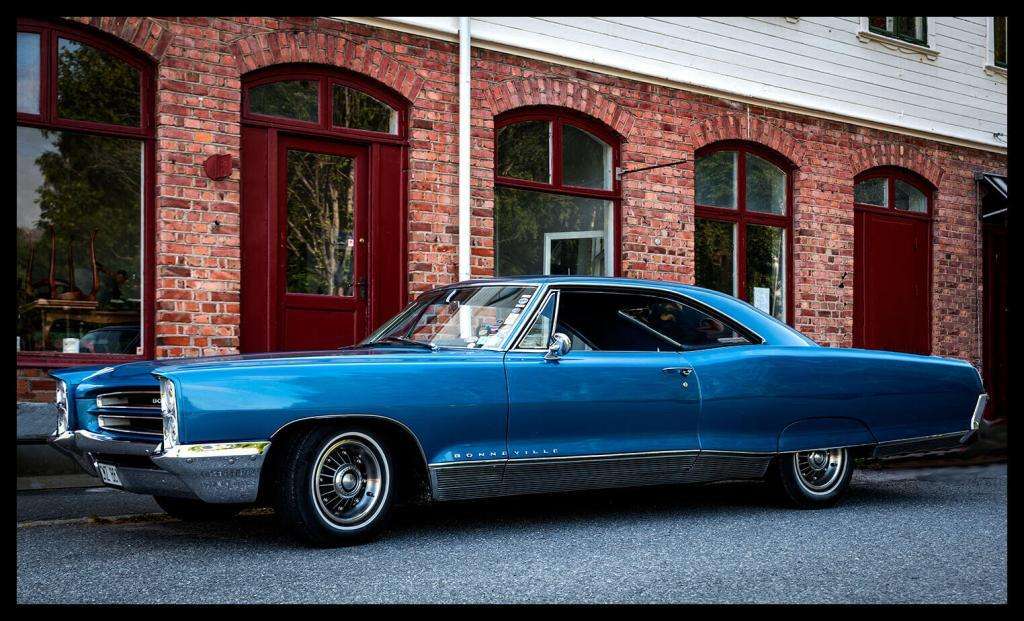Ford Hot Rod with Chrysler engine
Ford Hot Rod, Chrysler engine Ford Model A 5W
Ford Model A 5W Coupé 1955 Ford F100
1955 Ford F100 The 1955 Ford F-100
is a classic American pickup truck, widely celebrated for its combination of rugged durability and stylish design. As part of the second generation of the F-Series, introduced in 1953, the 1955 model retained many of the innovative changes that defined this era of Ford trucks.
One of the most notable features of the 1955 Ford F-100 was its updated, more modern appearance. It sported a sleeker, more aerodynamic body compared to its predecessors, with a distinctive, integrated front grille and headlights that gave it a more unified and contemporary look. The cab was roomier and more comfortable, reflecting the growing trend of trucks being used for both work and personal transportation.
Under the hood,
the 1955 F-100 offered several engine options, providing flexibility for different needs and preferences. The standard engine was a 223-cubic inch (3.7-liter) inline-six, known for its reliability and sufficient power for most tasks. For those seeking more performance, Ford offered the 239-cubic inch (3.9-liter) V8 engine, often referred to as the “Power King.” This V8 engine delivered more horsepower and torque, making the F-100 more capable of handling heavier loads and towing.
The 1955 F-100 also featured significant improvements in its suspension and steering systems, enhancing its driving dynamics and comfort. The introduction of the Ford “Twin-I-Beam” front suspension in later models was a precursor to this trend, providing a smoother ride and better handling compared to older models.
Interior amenities in the 1955 F-100 were more advanced than in previous generations, with better seating, improved instrumentation, and optional features like a radio and heater, which made driving more enjoyable.
Today, the 1955 Ford F-100
is a prized collectible, cherished by classic truck enthusiasts and restorers. Its timeless design, coupled with its robust engineering, makes it a popular choice at car shows and among customizers who often enhance its performance and aesthetics while retaining its vintage charm. The 1955 Ford F-100 stands as a testament to the era’s automotive innovation and remains a symbol of American automotive heritage.
1948 PONTIAC SILVER 8 STREAK
1948 Pontiac Silver 8 Streak The 1948 Pontiac Silver 8 Streak
is an iconic American car, known for its blend of post-war design and solid engineering. Part of Pontiac’s popular “Silver Streak” series, the 1948 model was the final year of this particular design line, which had been a staple since the 1930s. The name “Silver Streak” referred to the distinctive chrome bands running along the hood and trunk, a hallmark of Pontiac’s styling during this era. In particular, the “8” in Silver 8 Streak highlights its use of an inline eight-cylinder engine, providing the car with notable power and smooth performance.The design of the 1948 Pontiac Silver 8 Streak featured a robust, elegant look. It had a long, streamlined body with sweeping fenders and a wide grille, reflecting the post-war American automotive trend toward bigger, more luxurious vehicles. Chrome accents adorned the car, from the distinctive “Silver Streak” hood ornamentation to the bumpers and trim, adding a touch of glamour. Available in both sedan and coupe body styles, the Silver 8 Streak was designed to appeal to families and professionals seeking both style and dependability.
Under the hood,
the 1948 Pontiac Silver 8 Streak came with either a straight-six or straight-eight engine, with the latter being the more powerful and prestigious option. The 248 cubic inch straight-eight engine produced around 104 horsepower, providing a smooth and steady ride, especially at higher speeds. The car was equipped with a three-speed manual transmission, though some models offered Pontiac’s Hydra-Matic automatic transmission, which was cutting-edge technology at the time. The 1948 Silver 8 Streak offered improved suspension and a durable steel frame, contributing to a comfortable ride and solid handling, making it a practical choice for everyday driving. Inside, the car featured a spacious cabin with simple yet elegant design touches, including wood grain dash elements and plush seating.Today, the 1948 Pontiac Silver 8 Streak
is a prized collector’s car, representing a bridge between pre-war and post-war American automotive design. Its classic styling, sturdy engineering, and historical significance make it a beloved model for classic car enthusiasts.Cadillac headlights
1959 Cadillac Eldorado headlights The 1959 Cadillac Eldorado is iconic,
and its headlights are a distinctive feature that symbolizes the era’s automotive design flair. This model year stands out in Cadillac’s history, known for its dramatic styling, and the headlights contribute significantly to its bold, flamboyant character.
The 1959 Eldorado sported dual headlights, a trend that was gaining popularity in the late 1950s. These were set in a unique configuration, flanked by elaborate chrome bezels that extended outwards, seamlessly integrating into the car’s overall design. The positioning of the headlights at the car’s outermost edges enhanced its wide, imposing stance, giving the Eldorado a commanding presence on the road.
Above the headlights, Cadillac incorporated sharp, pointed fins, part of the era’s fascination with space-age motifs and aeronautical design influences. These fins started at the front fenders, creating a visual line that drew the eye rearwards along the car’s body. The interplay between the headlights and fins embodied the forward-looking optimism and technological confidence of the 1950s.
The headlight design
also reflected practical advancements in automotive lighting. Dual headlights, arranged vertically, provided improved illumination and safety. The use of four headlights allowed for better distribution of light, enhancing nighttime visibility for the driver. This configuration was a step up from the single headlight setup seen in earlier models, contributing to safer and more reliable driving experiences.
In terms of styling, the 1959 Eldorado’s headlights were part of a broader aesthetic that included expansive chrome detailing, large bumpers, and intricate grille designs. The headlights themselves were often adorned with additional chrome and metalwork, which added to the car’s luxurious and opulent appearance. This attention to detail in the headlight design was consistent with Cadillac’s reputation for elegance and innovation.
The 1959 Cadillac Eldorado,
with its striking headlight design, remains a celebrated example of mid-century American automotive artistry. The headlights, both functional and stylistically significant, are a key element that contributes to the car’s enduring legacy as an icon of design and engineering from the golden age of American automobiles.
Buick eight
The Buick Eight,
a series of cars produced by Buick from 1931 to 1953, is a significant chapter in American automotive history. These vehicles were powered by a straight-eight engine, a defining feature that marked a period of innovation and luxury in Buick’s lineup. The introduction of the straight-eight engine, also known as the inline-eight, provided a smooth and powerful driving experience that appealed to a growing middle class looking for both performance and elegance in their automobiles.
During its production run, the Buick Eight series encompassed a variety of models, ranging from the more affordable Special to the luxurious Roadmaster. The Special served as the entry-level model, offering Buick’s renowned engineering and style at a more accessible price point. On the other end of the spectrum, the Roadmaster represented the pinnacle of Buick’s design and engineering prowess, featuring advanced technology, superior craftsmanship, and a high level of comfort and luxury.
Buick eight from 1949 (on this photo) named Super Sedan was built from 1940 through the 1958 model years, with a brief brake from 1943 between 1945.
One of the standout features of the Buick Eight was its advanced engine design. The straight-eight engine was known for its smooth operation, which was a result of its longer crankshaft and the even firing order of the eight cylinders. This engine layout provided a balanced power delivery and minimized vibrations, making for a more refined driving experience compared to the V8 engines that would later become popular.
The design of
the Buick Eight vehicles also reflected the Art Deco and Streamline Moderne influences of the era. These cars featured flowing lines, distinctive grilles, and elegant chrome accents that made them stand out on the road. The interiors were equally luxurious, with plush seating, high-quality materials, and advanced features for the time, such as push-button radios and sophisticated heating systems.
The Buick Eight
played a crucial role in establishing Buick’s reputation for building high-quality, reliable, and stylish automobiles. It helped solidify the brand’s position in the American automotive market and laid the foundation for future innovations. Even today, classic car enthusiasts admire the Buick Eight for its engineering excellence and timeless design, making it a beloved icon of automotive history.
1937 Ford Slantback
The 1937 Ford Slantback
is a classic car that represents a pivotal era in automotive design and engineering. Produced by the Ford Motor Company during the late 1930s, it marked a significant departure from the more boxy, traditional car designs of the early 20th century. The term “Slantback” refers to the car’s distinctive rear end design, where the rear of the car slopes down smoothly, eliminating the separate trunk that was common in cars of the time. This sleek, streamlined look gave the car a more modern and aerodynamic appearance.
The 1937 Slantback came in two-door and four-door variants, offering versatility to buyers. It was part of Ford’s Deluxe line, which focused on style and comfort, appealing to families and middle-class buyers seeking a balance between luxury and affordability. The car featured an all-steel body construction, which was more durable and safer than earlier wood-framed models. Its design was influenced by the growing trend of Art Deco, visible in its curved lines, streamlined shape, and chrome accents.
Under the hood,
the 1937 Ford Slantback was powered by Ford’s reliable 221 cubic-inch flathead V8 engine, producing 85 horsepower. This engine provided decent performance for the time, contributing to Ford’s reputation for offering affordable cars with good power. The Slantback was equipped with hydraulic brakes, a feature that improved safety compared to its predecessors, which had mechanical brakes.
The 1937 model year also introduced improvements in suspension, with a more comfortable ride thanks to transverse leaf springs. While not as technologically advanced as some luxury cars, the Ford Slantback was dependable, stylish, and affordable, making it popular with a wide range of buyers.
Today,
the 1937 Ford Slantback remains a highly sought-after vehicle among classic car collectors and hot rod enthusiasts. Its unique design, historical significance, and customization potential make it a cherished piece of automotive history that continues to capture the imagination of car lovers.
Bonneville
The Pontiac Bonneville
a flagship model of the Pontiac Bonneville of General Motors, embodies an era of American automotive excellence and style. Introduced in 1957, the Bonneville quickly became synonymous with luxury, performance, and innovation, leaving an indelible mark on the automotive landscape.
From its inception, the Bonneville exuded an aura of sophistication and power. With its sleek, aerodynamic design and distinctive styling cues, such as its iconic split grille and chrome accents, the Bonneville commanded attention on the road. Its spacious interior, adorned with plush upholstery and luxurious amenities, provided a comfortable haven for passengers, making every journey a pleasure.
Engine
Under the hood, the Bonneville was powered by a range of formidable engines, delivering impressive performance and exhilarating acceleration. From the legendary V8 powerplants of the 1960s to the advanced fuel-injected engines of later years, the Bonneville offered drivers a thrilling driving experience, whether cruising down the open highway or navigating city streets.
Throughout its production history, the Bonneville evolved with the times, incorporating technological advancements and design innovations to stay ahead of the curve. From the introduction of safety features such as airbags and anti-lock brakes to the integration of cutting-edge infotainment systems, the Bonneville remained at the forefront of automotive engineering.
Popularity
Beyond its performance prowess, the Bonneville holds a special place in popular culture, appearing in films, television shows, and music lyrics as a symbol of American ingenuity and style. Its timeless design and enduring legacy have earned it a devoted following among collectors and enthusiasts, who cherish its classic lines and vintage charm.Despite the end of production in 2005, the Pontiac Bonneville continues to captivate the imagination of automotive enthusiasts around the world. Its legacy lives on as a testament to the golden age of American automobiles, a reminder of an era when cars were more than just transportation—they were works of art, crafted with passion and precision.









